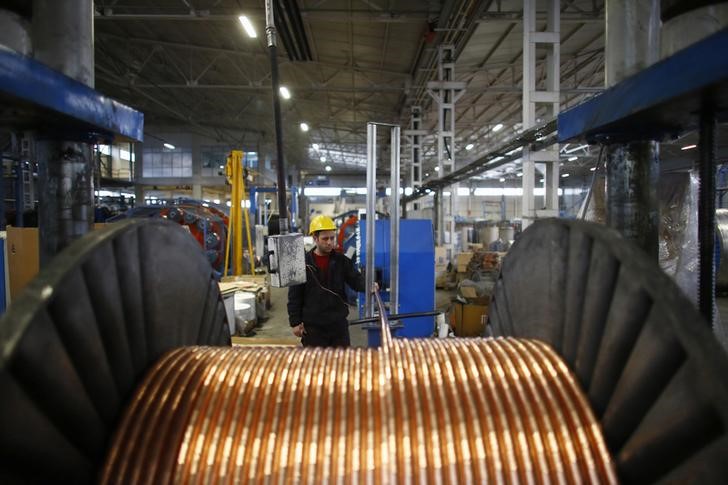Investing.com - Copper prices fell to the lowest level since May 2009 on Tuesday, as the possibility of higher interest rates in the U.S. and slower global economic growth, particularly in China, weighed.
Copper for December delivery on the Comex division of the New York Mercantile Exchange shed 1.9 cents, or 0.9%, to trade at $2.097 a pound during morning hours in London. It earlier fell to $2.066, a level not seen in more than six years.
Meanwhile, three-month copper on the London Metal Exchange dropped 1.09% to $4,651.75 a metric ton, a level not seen since June 2009.
Copper prices plunged more than 2% on Monday as appetite for riskier assets weakened following the weekend attacks in Paris that left 132 dead.
Prices of the red metal are down almost 30% since May as fears of a China-led global economic slowdown spooked traders and rattled sentiment.
Disappointing Chinese data on trade activity, inflation and industrial production last week reinforced the view that the economy remains in the midst of a gradual slowdown which will require policymakers in Beijing to roll out more measures to boost growth in coming months.
The Asian nation is the world’s largest copper consumer, accounting for nearly 45% of world consumption.
Elsewhere in metals trading, gold struggled near five-year lows as market players prepared for a hike in interest rates by the Federal Reserve next month.
Gold prices have lost nearly 9% since mid-October as investors recalibrated their expectations of U.S. monetary policy in response to hawkish signals from the Fed.
Expectations of higher borrowing rates going forward is considered bearish for gold, as the precious metal struggles to compete with yield-bearing assets when rates are on the rise.
The U.S. dollar rose to seven-month highs against a basket of six other major currencies, making dollar-priced commodities more expensive to investors holding other currencies.
The Commerce Department will publish inflation figures for October at 8:30AM ET Tuesday. The consensus forecast is that the report will show consumer prices rose 0.2% last month, after falling 0.2% in September. Core inflation is forecast to increase 0.2%, after gaining 0.2% a month earlier.
Weak inflation, due largely to lower oil prices, has been one of the key reasons for the Fed’s reluctance to raise interest rates so far this year.
